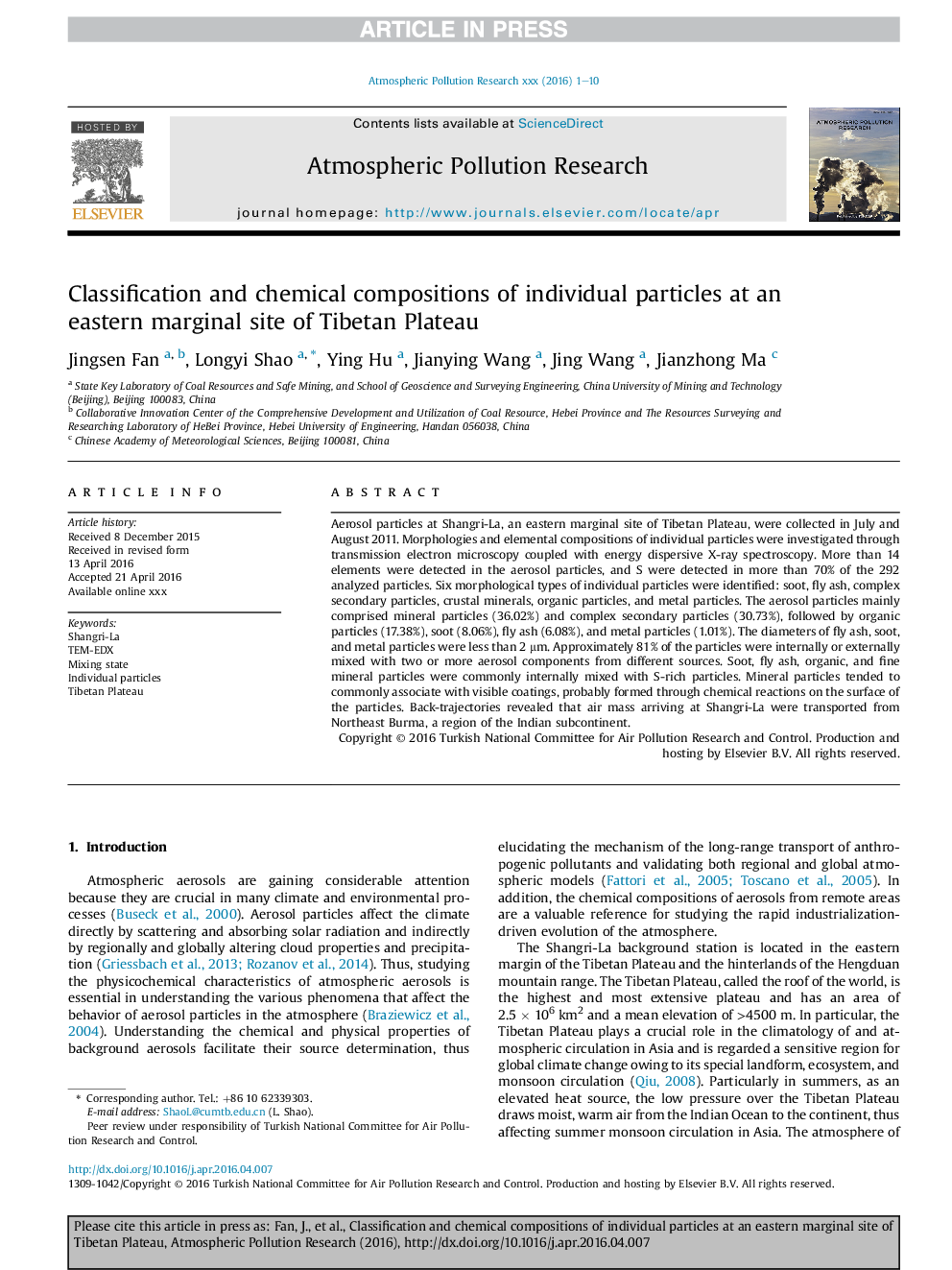| Article ID | Journal | Published Year | Pages | File Type |
|---|---|---|---|---|
| 8862838 | Atmospheric Pollution Research | 2016 | 10 Pages |
Abstract
Aerosol particles at Shangri-La, an eastern marginal site of Tibetan Plateau, were collected in July and August 2011. Morphologies and elemental compositions of individual particles were investigated through transmission electron microscopy coupled with energy dispersive X-ray spectroscopy. More than 14 elements were detected in the aerosol particles, and S were detected in more than 70% of the 292 analyzed particles. Six morphological types of individual particles were identified: soot, fly ash, complex secondary particles, crustal minerals, organic particles, and metal particles. The aerosol particles mainly comprised mineral particles (36.02%) and complex secondary particles (30.73%), followed by organic particles (17.38%), soot (8.06%), fly ash (6.08%), and metal particles (1.01%). The diameters of fly ash, soot, and metal particles were less than 2 μm. Approximately 81% of the particles were internally or externally mixed with two or more aerosol components from different sources. Soot, fly ash, organic, and fine mineral particles were commonly internally mixed with S-rich particles. Mineral particles tended to commonly associate with visible coatings, probably formed through chemical reactions on the surface of the particles. Back-trajectories revealed that air mass arriving at Shangri-La were transported from Northeast Burma, a region of the Indian subcontinent.
Related Topics
Physical Sciences and Engineering
Earth and Planetary Sciences
Atmospheric Science
Authors
Jingsen Fan, Longyi Shao, Ying Hu, Jianying Wang, Jing Wang, Jianzhong Ma,
